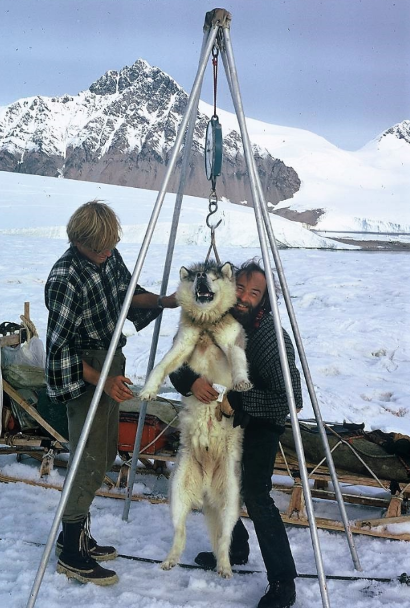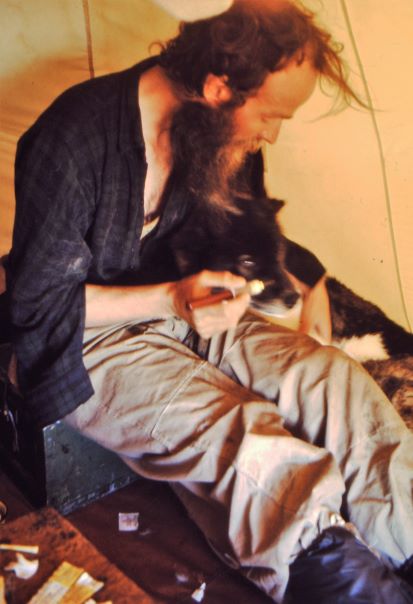BAS Dog Food – Bob Bostelmann

BAS huskies were fed approximately 6 pounds of seal meat every other day while they were on base; any extra blubber, skin or bone attached to the joint was extra. This was fed whole, usually frozen hard but was demolished within 10 minutes by the dogs.
When sledging the dogs were fed Nutrican (Nutty) which came in individually wrapped blocks of one pound. They were given one block per day for two days and then 2 blocks on the third day but like their human drivers they lost up a third of their base weight especially at the beginning of the season when the snow was deep and it was still very cold.
The nutty in the late 60’s was based on whale meat but the importation of whale products was banned towards then end of 1960’s so a new source of protein had to be found. It was decided to try soya but at the same time to try the New Zealand nutty where the protein was from a meat and liver meal (thought to be from wild deer).
Food trials are relatively easy. You measure what goes in, you measure what comes out and you assess what happens in between! Measuring what goes in was simple as all the blocks were an equal weight. Measuring or rather collecting what came out was more exciting as huskies are very hungry and will eat anything especially their neighbour’s warm turds. The driver therefore had to be very quick to collect the sample; an activity which was soon named “turd burgling”. The samples were collected up and given to me at the end of the season. Initially I dried an aliquot in a water bath.

I was using the doctor’s surgery at Stonington as a lab which was in the heart of the base between the surveyors’ office and the lounge. The smell was such that after the first batch was dried I was dispatched to a tent 200 yards down wind for the rest of the drying. In a similar vein when got back to Cambridge to complete the analysis I was working in the neurological department of the veterinary school and the first task was to finish the drying in a vacuum oven. My co-workers did not appreciate the smell so that I worked night shift –starting at 8pm when everyone had left and by 6am I opened all the windows and went home.
In the field we all felt that the dogs on the NZ food seemed to pass out more than they ate. They did actually pass 50% more faeces on a dry matter basis than the other two diets and this meant that only 67% of the protein was available to them as opposed to 80% from the traditional nutty and 86% from the soya nutty. The availability of the fat was very similar in all the diets but again slightly lower for the NZ nutty.

(Photo: John Yates)
The soya nutty was a bright yellow in colour and appeared to us to have no smell but the huskies ate it very readily.
Overall the dogs lost a lot more weight while on the NZ nutty compared to both the traditional and the soya nutty. For the trial half a team were on different rations for 6 weeks and then they were swopped to the opposite rations for a further 6 weeks so this weight loss occurred each and every time.
Weighing the dogs was relatively simple as they were all in harnesses. We used the spare tent poles and hung a slater hang balance from them. The only issue was lifting a 45kg wriggling mass at the same time as clipping the ring onto the balance which as usually above our head. We also measured as many factors as we thought likely to cause the weight loss ie weight of sledge, distance travelled, snow conditions, gradient, air temperature etc but unfortunately the results were inconclusive as we did not have the computers available then to sort out all the data
Bob Bostelmann – Vet, Stonington, 1973
